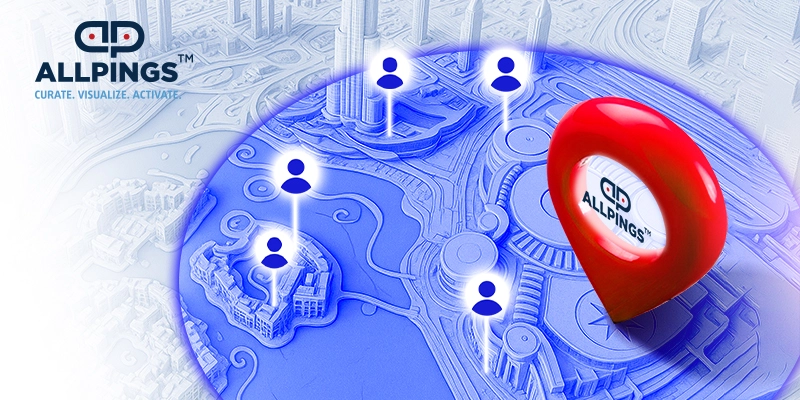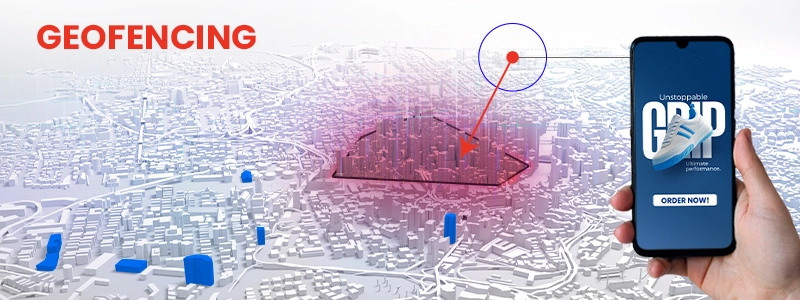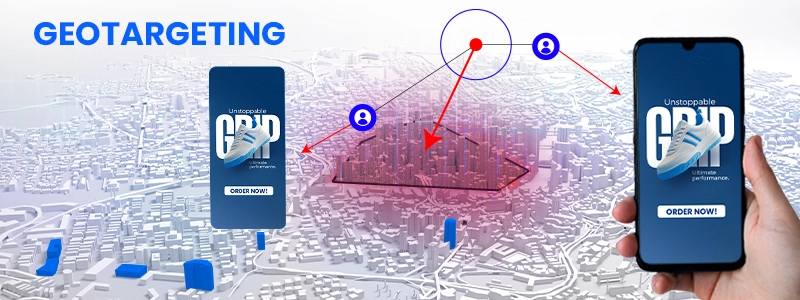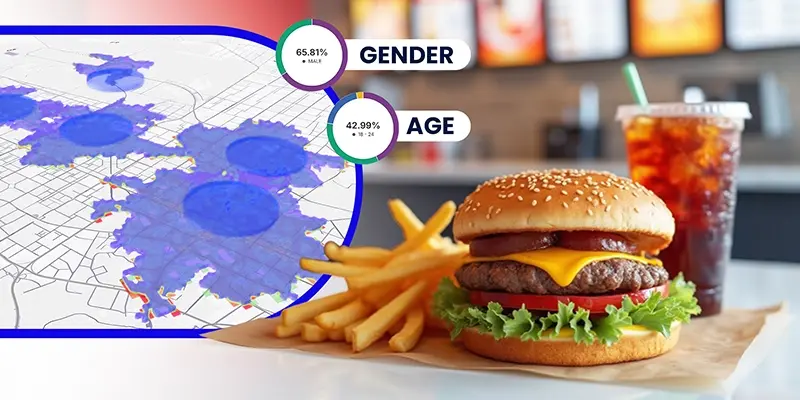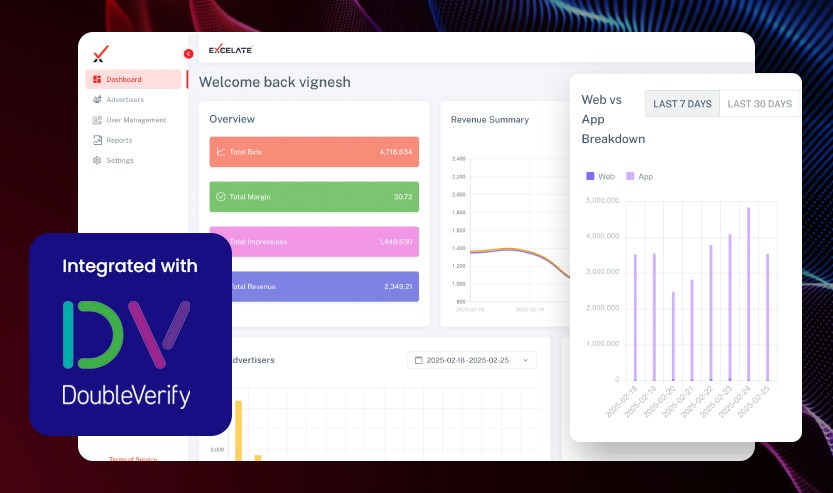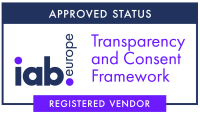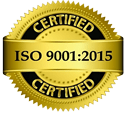Table of Contents
ToggleLocation is no longer just a place on a map—it’s your most powerful marketing asset.
As we move through 2025, businesses that understand their customers’ geographical locations outperform competitors by an average of 41%. Yet, most marketing teams still treat location data as an afterthought rather than the foundation of their strategy.
This gap between potential and practice is why geomarketing has emerged, offering brands a competitive edge by delivering hyper-relevant, context-driven experiences.
From the targeted ad you see walking past a store to the personalized offer tailored to your neighborhood’s shopping habits, location-based marketing is already shaping consumer decisions.
But what’s new? Advancements in GPS data, geofencing, and AI-powered analytics are transforming how marketers connect online and offline behaviors. These tools now predict intent, create seamless customer journeys, and deliver measurable results while navigating the delicate balance of personalization and privacy.
The What, Why, and How of Geomarketing
In this comprehensive guide to 2025’s geomarketing, we’ll explore the top geomarketing trends for the year, unpack practical strategies, and showcase real-world success stories, such as how an EV brand utilized geofencing to generate $1.3 million in sales.
Whether you’re a retailer, restaurateur, or marketer, this blog will equip you to turn location data into a powerful business asset.
What Is Geomarketing?
Geomarketing blends geographic data with marketing strategies to deliver campaigns that resonate based on where consumers are or have been. It’s more than sending ads—it’s about understanding context: where people shop, eat, work, or explore.
The term “geo” underscores that physical location remains a key driver of consumer behavior, even in our digital age. There are two primary approaches to geomarketing:
- Geofencing: Create virtual polygonal fences to trigger location-based actions, such as sending ads when someone enters a defined area / specific location.
- Geotargeting: Targeting people with ads based on their real-time location.
The concept isn’t new. While retailers in the 1990s used basic location data for site selection, today’s geomarketing is precision-driven.
With mobile penetration exceeding 95% in markets like the UAE and Saudi Arabia and 75% of GCC consumers acting on location-based ads within hours, businesses can no longer ignore its potential.
Isoline Maps and Heatmaps: The Future of Hyperlocal Advertising
Why Geomarketing Matters in 2025?
The power of geomarketing lies in its ability to connect online and offline worlds.
A 2024 Forrester study found that businesses linking online research to in-store visits achieve a 47% higher conversion rate than those relying solely on in-store analytics.
Location data reveals not just coordinates but rich patterns—where customers go, how long they stay, and what paths they take.
Consider this: your last purchase was likely influenced by location, whether you realized it or not.
A location-based ad might have nudged you toward a coffee shop, or a personalized offer arrived when you were near a favorite store.
In 2025, these interactions are becoming smarter, with GPS data predicting intent and geofencing delivering tailored experiences based on past behaviors.
But challenges remain:
- How do you leverage these tools without seeming intrusive?
- How do you turn raw location data into actionable insights?
- And how do you stay ahead of competitors?
Let’s dive into the strategies and trends shaping geomarketing in 2025.
How Geomarketing Works
Geomarketing combines location data with marketing strategies to deliver highly targeted, context-aware campaigns.
By understanding where and when potential customers are most active, businesses can make smarter decisions and improve engagement. Below are the key technologies powering this approach:
- Geofencing
Virtual boundaries trigger actions when users enter or exit a zone. For example, a Kuwait retailer might geofence Avenues Mall, sending discounts to shoppers inside during peak hours (4-8 PM). This ensures ads align with the purchase intent. - Mobility Heatmaps
These visualize crowd movement and density. A Jeddah café could utilize heatmaps to identify high-traffic zones near the Corniche, where 80,000 visitors pass by weekly, allowing them to choose the ideal spot for a new branch. - Real-Time Analytics
Live data tracks consumer behavior. A Dubai fitness chain might detect evening crowds near Sheikh Zayed Road and push trial offers, capitalizing on the 25% of UAE adults exercising post-work (2024 YouGov data). - Path-to-Purchase Tracking
The map’s journey insights help predict buying intent. For example, a Qatar car dealership could identify users visiting rival showrooms and offer tailored test-drive invites.
How Geofencing Works
The technology combines GPS, RFID, Wi-Fi, or cellular data to establish virtual boundaries. When a customer’s device crosses this boundary, the system can automatically send notifications, ads, or other marketing content.
The size of geofences varies widely based on business needs, from small perimeters around specific store entrances to larger areas covering entire neighborhoods or shopping districts.
Geofencing Strategies to Drive Immediate Engagement
When we discuss geofencing, we focus on the exact technique of setting up digital boundaries—those virtual fences—and triggering notifications or ads when people cross them.
It’s a bit different from geotargeting, which covers broader location-based advertising. With geofencing, you’re zeroing in on who’s physically near your business, and that level of precision can be a game-changer.
Here are some simple, customer-focused strategies to make geofencing work for your QSR, retail, or automotive business:
Geofencing For Quick Service Restaurants (QSRs)

- Geofencing Flash Deals
Imagine you’re at a mall. A nearby restaurant sets a geofence a few hundred meters around its store, and as soon as someone walks in, a notification appears, saying, “Hungry? Get 20% off your meal today only!”
This kind of real-time offer not only grabs attention but also encourages people to make a quick decision to stop by for a bite. It’s like whispering a timely secret deal right as they’re passing by.
- Real-Time Menu Suggestions
On a chilly day when you’re walking by your favorite fast-food joint. As you get closer, your app sends you a message: “It’s cold out—warm up with our hot cocoa!”
By linking your digital menu boards and mobile app notifications to a geofence, your restaurant can offer the ideal meal selections tailored to current conditions. This personalizes the experience while still keeping it timely.
- Tapping into Local Events
Why not take advantage of a local sports game or a festival nearby? Set a geofence around the event venue and send an offer, such as “Game Day Special—show your ticket and get a free shawarma!”
This strategy connects your deal to the excitement of the local event, making it feel relevant and fun.
Geofencing For Retail

- In-Store Engagement and Navigation
Imagine entering a big department store and getting a push notification on your phone with a store map highlighting the sale sections or new arrivals.By setting up geofences within your store (or around it), you can direct shoppers to the areas that interest them the most. It makes the experience smoother, like having a personal shopping assistant.
- Personalized Promotions
Think about how much nicer it feels when a shop remembers you. If a customer has bought a specific style of accessory before, you could set a geofence around your store and send them a message like,“Welcome back! Enjoy 15% off on our latest accessories today!” This level of personalization makes your customers feel valued and increases the likelihood that they will visit.
- UniChannel Synchronization
Let’s say you’ve been browsing your favorite online clothing store, and then, as you’re near one of their physical stores, your phone buzzes with a reminder about an exclusive in-store offer.Synchronizing your online and offline channels through geofencing reinforces your message everywhere and creates a seamless shopping journey. It’s like the brand is always there with you, whether online or in person.
Geofencing For Automotive

- In-Store Engagement and Navigation
Imagine entering a big department store and getting a push notification on your phone with a store map highlighting the sale sections or new arrivals.
By setting up geofences within your store (or around it), you can direct shoppers to the areas that interest them the most. It makes the experience smoother, like having a personal shopping assistant.
- Personalized Promotions
Think about how much nicer it feels when a shop remembers you. If a customer has bought a specific style of accessory before, you could set a geofence around your store and send them a message like,
“Welcome back! Enjoy 15% off on our latest accessories today!” This level of personalization makes your customers feel valued and increases the likelihood that they will visit.
- UniChannel Synchronization
Let’s say you’ve been browsing your favorite online clothing store, and then, as you’re near one of their physical stores, your phone buzzes with a reminder about an exclusive in-store offer.
Synchronizing your online and offline channels through geofencing reinforces your message everywhere and creates a seamless shopping journey. It’s like the brand is always there with you, whether online or in person.
Geofencing Strategies to Drive Immediate Engagement
Several platforms have emerged to help marketers implement geofencing campaigns without extensive technical knowledge:
- AllPings, a SaaS Location Intelligence Platform: Powered by Geohash9 technology and designed to deliver precise location-based insights with an accuracy of 4.77m x 4.77m.
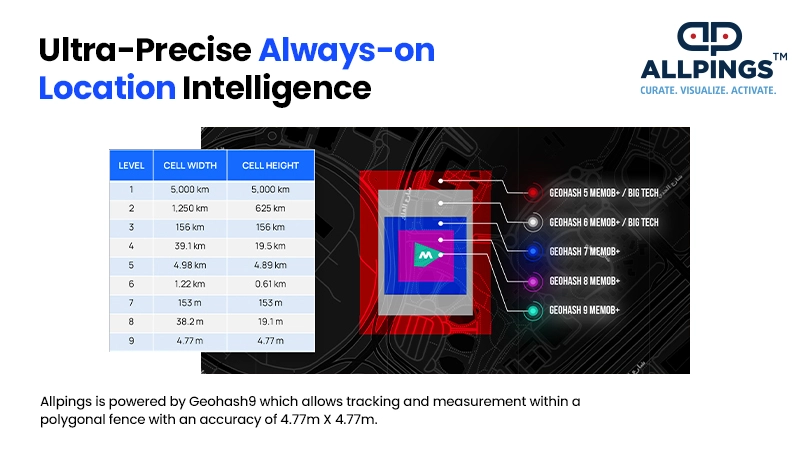
- Radar provides geofencing APIs and SDKs that integrate with existing mobile apps.
- Gimbal offers location-aware mobile advertising solutions with detailed analytics.
- Maptive enables the creation of custom geofences on interactive maps for targeted campaigns.
When implementing geofencing, businesses should consider these key factors:
- Fence Size: Smaller fences (100-500 feet) work well for specific locations like stores, while larger ones (1-5 miles) better serve awareness campaigns
- Timing: Messages should be triggered at logical times when customers can act on them
- Frequency: Too many notifications lead to fatigue—limit geofence triggers to preserve effectiveness
A critical aspect often overlooked is measuring the effectiveness of geofencing campaigns.
Beyond simple metrics like open rates, businesses should track store visits, purchase rates, and long-term customer value to understand the actual impact of location-based interventions.
Success Story: How Location Intelligence and Geofencing Drove $1.3M in Electric Vehicle Sales in the UAE
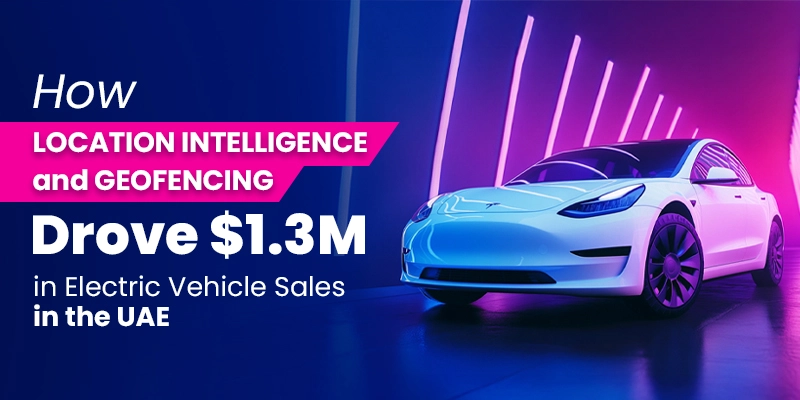
As electric vehicles (EVs) accelerate into mainstream adoption, innovative brands are leveraging data to stay ahead. One pioneering EV brand in the UAE partnered with MEmob+ to identify the most strategic location for its debut pop-up store.
The mission is to drive visibility, engagement, and real-world sales, powered entirely by predictive data analysis and AllPings Location Intelligence.
Our Methodology: From Insight to Impact
To launch with precision, the team at MEmob+ designed a multi-layered research and activation strategy conducted over one month in Dubai. Here’s how data transformed into action:
- Geofencing & Mobility Heat Mapping
MEmob+ activated AllPings’ advanced geolocation tools to map foot traffic patterns across car showrooms, popular malls, and residential communities. The focus was on high-mobility zones.
We tracked devices anonymously, identifying locations with repeated visitation patterns aligned with car buyers’ behaviors.
- Audience Segmentation & Profiling
Using behavioral, psychographic, and contextual data, MEmob+ segmented the audience based on tech adoption, environmental consciousness, affluence (CEC A/B), online behavior, and content engagement.
We achieved this via AllPings Cards, which group audiences using real-world mobility and digital signal intelligence.
- Predictive Analysis & Buyer Modeling
MEmob+ applied machine learning algorithms to predict the likelihood of purchase, incorporating age, income, residential location, online behavior (automotive interest, eco-content engagement), and visit frequency to competitive car showrooms and related destinations.
Footfall data was overlaid with conversion likelihood models, estimating not only potential reach but also actual expected conversions, driving a shift from media metrics to revenue outcomes.
- Location Selection with Confidence
The model identified Dubai Hills Mall as the optimal launch site owing to its high overlap with the target audience, premium footfall profile, and accessibility to affluent, family-oriented communities (CEC A/B).
A heatmap visually confirmed the zone’s potential for engagement and brand discovery. The Campaign achieved:
- Identified ~5,000 high-intent car buyers in Dubai
- Pinpointed key high-traffic neighborhoods: JVC, Motor City, Sports City, JLT
- Strategically launched at Dubai Hills Mall
- Generated 21 direct car sales from the pop-up
- Revenue Impact: Approx. $1.3M in vehicle sales
See how an innovative EV brand used geofencing and mobility insights to crack the UAE market. By zeroing in on bustling locations like Dubai Hills Mall and connecting with tech-savvy, eco-minded buyers, they drove 21 car sales and $1.3M in revenue from one pop-up store.
Overcoming Challenges in Data-Driven Marketing
Despite its benefits, data-driven geomarketing faces significant challenges. Privacy concerns continue to grow, with 68% of consumers expressing worry about location tracking, according to a 2025 PwC survey.
Technical challenges also persist, including:
- Data silos that prevent comprehensive analysis
- Signal quality issues in dense urban environments
- Attribution difficulties when customers use multiple devices
- Varying data standards across platforms and regions
Some businesses have addressed these challenges by adopting a permission-based approach to data collection. These companies have maintained high opt-in rates while building trust by clearly explaining the benefits of location sharing and giving customers control over their data.
Mastering Geomarketing with AllPings
Let’s explore AllPings, a SaaS location intelligence platform that combines real-time mobility data with comprehensive audience profiling. This enables brands to understand their customers’ behaviors, preferences, and shopping patterns like never before.
Unlike traditional geofencing tools, AllPings doesn’t just track foot traffic. It offers a unified dashboard that integrates online and offline data, helping marketers craft personalized campaigns that resonate with specific audience segments.
Whether you’re a retailer aiming to drive store visits or an automotive brand launching a pop-up store, AllPings provides actionable insights to make data-driven decisions.
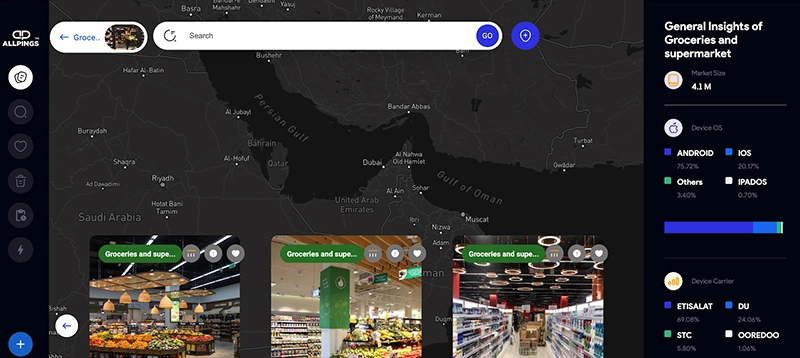
Let’s explore AllPings, a SaaS location intelligence platform that combines real-time mobility data with comprehensive audience profiling. This enables brands to understand their customers’ behaviors, preferences, and shopping patterns like never before.
Unlike traditional geofencing tools, AllPings doesn’t just track foot traffic. It offers a unified dashboard that integrates online and offline data, helping marketers craft personalized campaigns that resonate with specific audience segments.
Whether you’re a retailer aiming to drive store visits or an automotive brand launching a pop-up store, AllPings provides actionable insights to make data-driven decisions.
How AllPings Simplifies GeoMarketing for Brands
MEmob+ is transforming and simplifying geomarketing with AllPings, a SaaS Location Intelligence Platform that converts consumer mobility into high-impact marketing moments, enabling real-time conversion of GCC shoppers and boosting ROI.
- Mobility & Population Heatmaps for Smarter Site Planning
Identify high-traffic areas in Dubai, Riyadh, Jeddah, and Doha store foot traffic zones and peak movement hours to select the best store locations for retail stores, QSRs, and pop-up experiences based on- Real-time population density.
- Visitation patterns.
- Peak movement hours at key locations, such as Jeddah’s Corniche or Qatar’s Souq Waqif, provide businesses with the perfect opportunity to invest in the ideal site for their next store location.
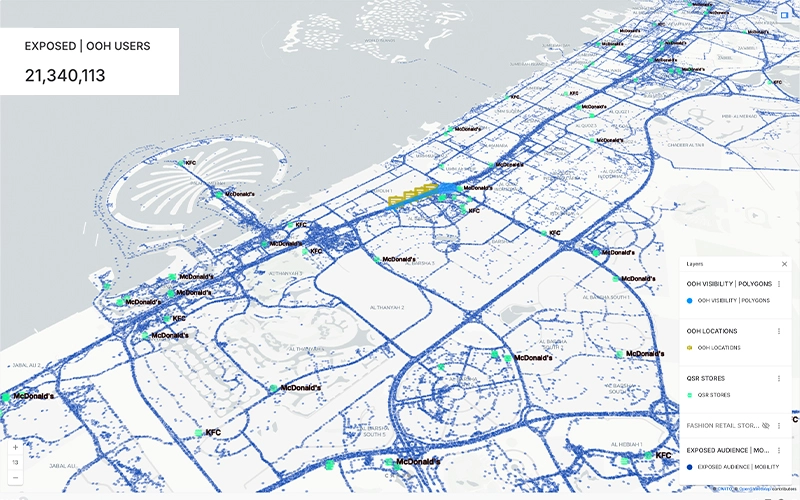
2. Real-Time Consumer Engagement Through Live Geofencing
- Predict & engage consumers near stores, competitor locations, or key touchpoints.
- Deliver hyper-relevant ads when users are most likely to convert.
- Maximize ad relevance & ROI by engaging users before the point of sale (POS).
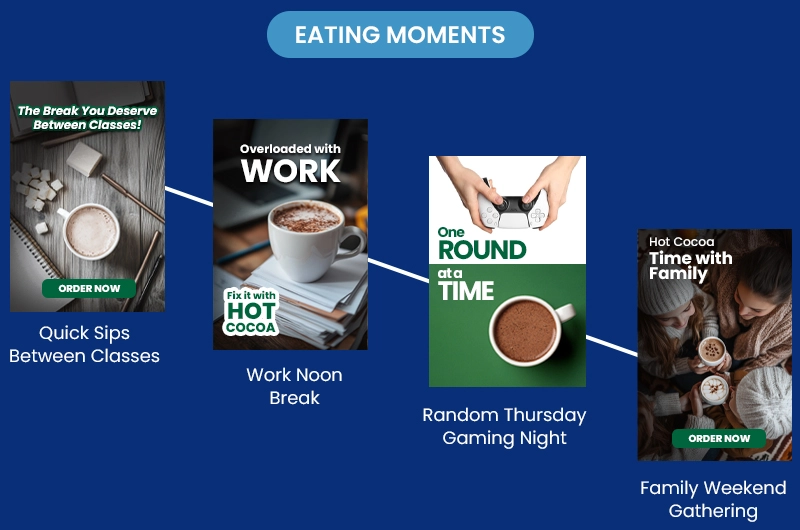
3. Path-to-Purchase Insights, Driving Foot Traffic to Stores
- Track GCC consumer mobility patterns to predict intent
- Bridge the gap between digital ads and in-store visits to ensure every marketing dollar counts.
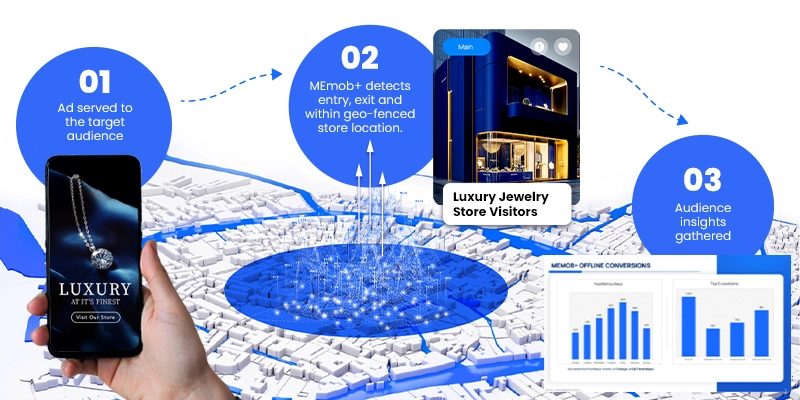
Geomarketing in Action: GCC Industries
Let’s explore how geomarketing reshapes key sectors, with examples grounded in the region.
Automotive and Real Estate Sectors
Challenge: High-value purchases like cars ($15 billion GCC market, 2024 Frost & Sullivan) or homes involve research and price comparisons.
Timing engagement and knowing when and where to engage them to influence their purchasing decisions are critical.
Solutions:
- Intent Tracking: A Jeddah dealership spots users visiting auto malls, where 10,000 cars are sold monthly (source: 2024 industry data), and offers test drives.
- Digital-to-Physical: An Abu Dhabi developer targets online browsers with tour invites when they’re near a site, tapping the $50 billion UAE property market (source: 2024 Knight Frank).
- Rival Play: A Dubai car brand reaches competitor test drivers with financing deals using AllPings’ precision targeting.
Results: More engaged buyers, faster sales cycles, Higher showroom/ property visits, increased test drives, and stronger lead conversions.

QSR and Retail Sectors - Driving Foot Traffic to Stores
Challenge: Thousands of potential customers walk past stores daily without stepping inside. Hungry diners and casual shoppers slip by. Competition’s tight, and hope doesn’t drive sales—precision does.
Solutions:
- Geofencing: A Riyadh QSR geofences its outlet, sending “Free dessert with lunch” alerts during the 12-2 PM rush, when 30% of Saudis dine out (source: 2024 Zomato data).
- Heatmaps: A Dubai retailer picks a pop-up near Dubai Marina, where weekend footfall tops 20,000 (source: 2024 JLL data).
- Retargeting: A shopper who browses online gets a nudge when near the store, boosting conversions.
- Competitor Edge: A Manama café targets users leaving rivals, leveraging AllPings to craft timely offers.
Results: More in-store visits, impulse buys, higher conversions, strong customer retention, and revenue growth.
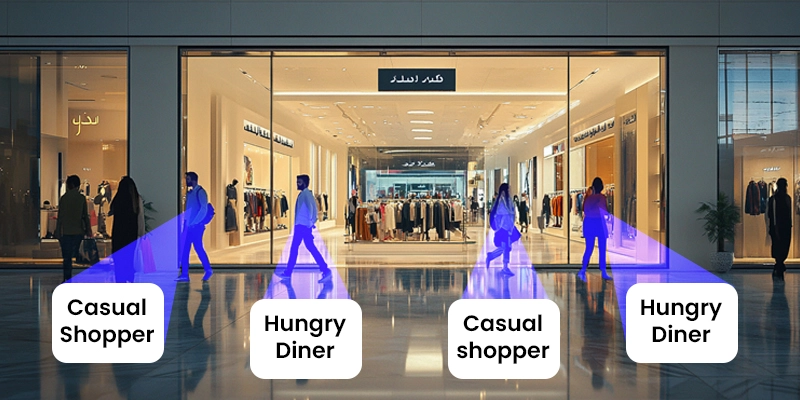
Challenge: Thousands of potential customers walk past stores daily without stepping inside. Hungry diners and casual shoppers slip by. Competition’s tight, and hope doesn’t drive sales—precision does.
Solutions:
- Geofencing: A Riyadh QSR geofences its outlet, sending “Free dessert with lunch” alerts during the 12-2 PM rush, when 30% of Saudis dine out (2024 Zomato data).
- Heatmaps: A Dubai retailer picks a pop-up near Dubai Marina, where weekend footfall tops 20,000 (2024 JLL data).
- Retargeting: A shopper who browses online gets a nudge when near the store, boosting conversions.
- Competitor Edge: A Manama café targets users leaving rivals, leveraging AllPings to craft timely offers.
Results: More in-store visits, impulse buys, higher conversions, strong customer retention, and revenue growth.
Predictions: Geomarketing Trends for 2025
Key Trends
- AI Precision: Algorithms will better predict intent, tailoring offers to behaviors like mall visits. AllPings’ AI, for example, refines ad timing for GCC retailers.
- Mega-Project Surge: NEOM and Riyadh Season will spawn new ad zones, targeting the 15 million tourists expected in Saudi Arabia by 2026 (source: 2024 STA data).
- Cross-Platform Flow: Geomarketing will link X posts to store visits, creating seamless journeys.
- Privacy Focus: Stricter laws will favor transparent tools, giving an edge to platforms like AllPings that prioritize consent.
These shifts underpin the $2 billion spending forecast, rewarding early adopters.
Adapting to the Future of Location Analytics
- Wearable Tech in Location Tracking
Wearables experienced a 28% growth in 2024, with 41% of U.S. adults owning devices (IDC). New GPS chips offer 30% better accuracy, and hybrid positioning improves indoor tracking.
A fitness brand targeted gym-goers with recovery ads, achieving 3.2x higher conversions. Yet, 62% of consumers worry about tracking, per PwC. - Cross-Channel Integration
By Q1 2024, 63% of retailers had integrated online-offline profiles, which boosted retention by 42%.
Real-time orchestration aligns experiences across channels, with new attribution models linking 86% of in-store traffic to campaigns. - Augmented Reality (AR)
In Geomarketing AR adoption rose from 8% to 27% in 2024. Retailers’ “AR store modes” increased basket values by 31%.
Tourism and real estate also benefit, with AR guides boosting hotel satisfaction by 24 points and speeding property sales by 41%.
In 2025, geomarketing will be a cornerstone of success. Geofencing to AR, location-based marketing connects brands with customers in meaningful ways. Businesses can create campaigns that resonate by leveraging GPS data, integrating channels, and respecting privacy.
The future favors those balancing personalization with trust. Whether launching a geofencing campaign or exploring wearable tech, now is the time to act. Effective geomarketing isn’t just about tracking—it’s about understanding people in context.
Experience the power of real-time geomarketing.
